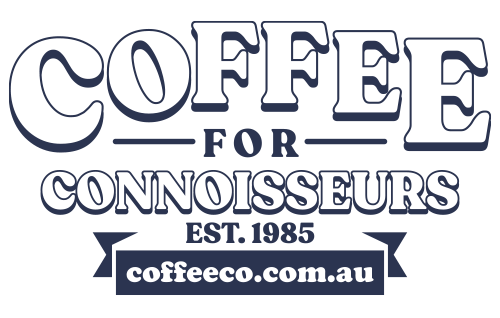Tasting Coffee
The taste of the coffee is ultimately what it’s all about. Everything which goes before the moment you savour the first sip of your cup should be designed to give you the best possible flavour experience.
All too often it’s designed to separate you from your cash with the minimum of trouble on the part of the person supplying the coffee, and the taste is very much a secondary consideration. However, for those who wish to have their palates educated, there IS a standard tasting terminology for coffee. This was originally produced by Ted Lingle, who has also published a book called The Coffee Cuppers’ Handbook, currently in the third edition, and who is currently executive director of the Specialty Coffees Association of America (SCAA).
The human mouth experiences 5 taste sensations, sweet, sour, salty, bitter and umami, the last being the mouth’s reaction to MSG, a common flavour enhancer. Most of the sensation we actually interpret as taste is really the product of our sense of smell. This is probably why the definition of the ultimate in coffee is "one that tastes the same as it smells"
Professional coffee tasting technique can be summarized as the Big Sniff, the Big Slurp and the Big Spit. The sniff is for smelling the coffee, of course. A superior coffee will have a strong, pure aroma with no disagreeable smells. Then comes the big slurp, basically an attempt to inhale a mouthful of coffee without choking (takes a bit of practice), after which you swish the coffee around inside your mouth to determine its overall taste, body and balance. Projectile spitting into a spittoon is another art which must be learned if you don’t want to wear brown permanently.
After the show is over, the big question is – what does it taste like? – and hopefully the answer is "COFFEE!" However, the overall taste can usually be defined in terms of "sourness" – the level of acidity, "sweetness" – caramelised sugars formed during roasting – "bitterness" – undesirable taint at the back of the mouth – and "body" – lipid (oil) content contributing to mouthfeel. The more subtle flavour nuances, such as "blackberry", "gamey", "maple syrup", "toast" are generally features of the aroma, the descriptions attempt to communicate the overall flavour by analogy to known tastes. This is where Ted Lingle came in; below are the "Flavor Wheels" he invented in his attempt to standardize the terminology.
The first wheel is a description of the potential faults associated with improper storage, handling and roasting of coffee beans. The second is the attempt to characterize flavours and aromas in easily understandable terms, allowing you to describe a coffee as "Sweet, with a mellow acidity and a slight trace of bitterness in the aftertaste. The aroma is honey with hints of flowers and citrus. The medium body rounds out the flavour into a balanced whole”.
Image Credit: SCAA
Learning to taste coffee is almost entirely a practical affair, with of course a lot of paperwork attached. "If you don’t write it down, you never tasted it."
A good way to familiarize yourself with the various coffee "tastes" is to try them as pure versions first, a method that’s also practical for wine tasting.
Try dissolving the following in 200ml of hot water:
0.5g sugar, for "Sweet".
0.5g citric acid, for "Acidity".
0.1g salt, for "Salt".
1 crushed "No-Doz" (caffeine) tablet for "Bitter".
0.5g sunflower oil for "Body" (stir well to emulsify it, or add it to the "Acid" sample.)
Be prepared to do a LOT of spitting and palate cleansing. After tasting this lot, you’ll have a fair idea of what you’re talking about in coffee equivalents.
What this gives you is a (very) basic appreciation of exactly what you are tasting when you cup a coffee. Very much more sophisticated and scientific appreciation can be achieved with precise measures of various coffee extracts, which can even be used to "calibrate" a person’s palate by detecting the thresholds at which they can taste various flavours. There is also an "Aroma" kit available from the SCAA, "Le Nez Du Café", which is designed to enable tasters to exactly categorize what they are smelling.
This standard of expertise is really only required if you’re making your living out of it, as the time, trouble and expense involved in developing your senses is out of reach of most people.

